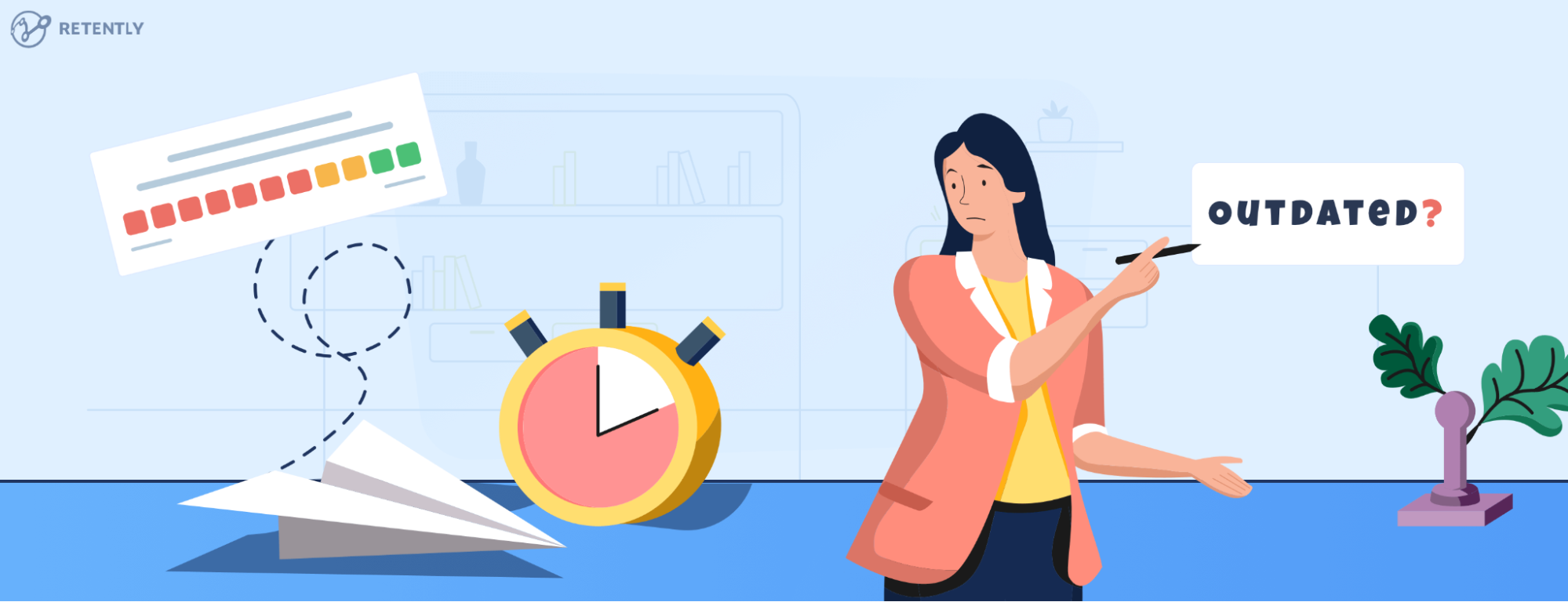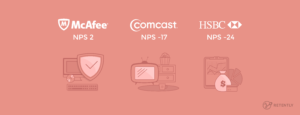In a 2003 Harvard Business Review article, Fred Reichheld introduced Net Promoter Score® as a new measure of customer loyalty and satisfaction.
That makes the Net Promoter Score, as of 2023, 20 years old — an eternity for a customer success metric in the fast-paced world of technology. As a result, it’s understandable that some people might view Net Promoter Score as an outdated, overexposed, and overused system.
The reality, however, is that NPS® is just as valuable as a customer satisfaction tool as ever. In fact, with web users more flooded with email-based distractions than ever, the simplicity of NPS could make it even more valuable than before.
Are you stuck in the customer satisfaction bubble?
If you’re a customer satisfaction and retention expert using Net Promoter Score data daily, it’s easy to get the impression that NPS is everywhere online.
After all, you’re in the “customer satisfaction bubble” — an awareness of customer satisfaction metrics and tools you’ve gained from using them frequently. Since you’re familiar with systems like Net Promoter Score, you’re more likely to notice them when you engage with new products.
It’s easy to let this awareness distort the way you think of a system, product, or service. Just like an advertising expert might be more aware of advertisements and a workplace safety consultant more aware of potential hazards, incorporating NPS as part of your own business can make you see it everywhere.
When you receive a customer satisfaction survey in your email inbox, you can instantly identify it as using Net Promoter Score. When you see a modal customer satisfaction pop-up in the corner of a SaaS tool, you can predict (with some accuracy) the one question it’s likely to ask you.
This can make it easy to assume that everyone sees the internet in the same way and that NPS is far more “known” than it actually is. The reality is that most customers aren’t aware of the mechanics behind NPS and respond to it with a fresh mind, creating valuable feedback for your business.
Most customers aren’t aware of how NPS works
Although Net Promoter Score is well known and widely used by online businesses, the vast majority of customers don’t know how it works.
For example, customers who purchase something from Amazon and answer a Net Promoter Score survey will most likely never send an NPS survey themselves; therefore, the mechanics of the survey aren’t something they think about.
A great way to familiarize yourself with how customers will perceive your NPS survey is to walk through the customer journey yourself.
Create a free trial account for your own SaaS product, then send yourself an NPS email. You’ll see it as a free or paying user would — as a fresh email asking for honest feedback and a quick rating of your likelihood to recommend your product.
This is precisely how most customers perceive your NPS survey — as a genuine request for actionable feedback. Few people are so familiar with Net Promoter Score that they hesitate to provide accurate or valuable insights.
Awareness of NPS can produce better feedback
Interestingly, we’ve observed that familiarity with Net Promoter Score can produce higher-quality feedback.
We’ve noticed that our customers (all of whom use our Net Promoter Score software and completely understand what their score means) tend to use this knowledge to give us better signals and insights into opportunities for improvement.
Contrary to the assumption that familiarity with Net Promoter Score produces worse feedback, the input we receive from people familiar with NPS tends to be the most valuable.
Not only is it more detailed, but it also tends to be more specific and actionable. Users familiar with Net Promoter Score are more likely to view the survey from the brand’s perspective and provide focused and easy to implement feedback.
This is great news, especially if you operate in a B2B industry where NPS knowledge is widespread. If your audience is already familiar with NPS, there’s a significant chance that you’ll receive detailed and helpful qualitative feedback.
As we’ve covered before, the feedback you receive from your NPS survey is just as valuable — if not more valuable — than the NPS score itself.
NPS is widely used, but definitely not outdated
Look through NPS benchmark data, and it’s easy to get the impression that NPS is overused as a customer satisfaction tool. After all, if almost every major brand in the world uses NPS, isn’t there a risk of customers becoming desensitized and apathetic toward NPS surveys?
Not really, the data suggests. Almost 20 years after it was introduced, Net Promoter Score is as valuable as it always has been. In fact, features like NPS analytics and survey customization make it more useful than ever for businesses focused on customer satisfaction and retention.
It’s now easier than ever for your business to analyze NPS feedback and spot trends in customer sentiment as they develop. Thanks to automation, it’s quicker and easier to send NPS surveys and collect data than at any point in time.
The end result is a metric that, far from being outdated or overexposed, is more valuable for any business than before. If retention and customer satisfaction are a priority, there’s never been a better time to start using Net Promoter Score.
NPS evolves constantly
NPS started as a very basic metric, that required running surveys and collecting data by email on a regular basis. As a result, the obtained feedback was insightful, yet general, not connected to a specific feature, transaction, or process in the company.
Calculating your general NPS today is still useful, but it’s not enough anymore. That’s why new survey channels and campaign types were added to the NPS framework.
Besides the email channel, you can now trigger NPS surveys in a web or mobile application (in-app) to assess customer satisfaction while using your product. Customers receive NPS surveys as text messages or they are asked to leave their feedback at the counters, in stores, by tapping the score on a tablet or smartphone.
Another important evolution of the framework is collecting feedback after each customer transaction or specific event triggers. It allows Customer Success and Product Managers to improve crucial processes in their customers’ journeys and increase the customer lifetime value.
NPS reports have also become more insightful, allowing you to filter and recalculate your data based on offline or online touch-points, audience segments, or other custom attributes.
Over time, the framework became more sophisticated while still keeping its initial appeal of a simple metric, and it looks like companies choose to rather improve the NPS methodology than switch to a new metric.
Start using NPS to survey customers and improve retention
Customers now expect personalized experiences and swift 24/7 responsiveness, raising questions about whether NPS can keep up. So, is NPS outdated, or can it adapt to the demands of today’s business landscape? The answer lies in balance and adaptability.
NPS definitely stood the test of time for its simplicity and universality, offering value in many situations. Yet, if you feel like NPS falls short in complex customer journeys, alternative metrics are at your disposal.
The key takeaway? Businesses must adapt. Consider your unique needs, use NPS where it fits, and support it with other satisfaction metrics when needed. Consistently evaluate your feedback mechanism to keep up with the changing customer expectations. This means being open to using multiple CX metrics and techniques to gain a proper understanding of customer sentiment.
Designed from the ground up for SaaS businesses and other companies that depend on long-term retention, Retently makes it easier than ever to survey your customers, generate helpful feedback and drive improvements.
We’ve helped thousands of businesses use their CX data to reduce churn, retain customers and generate more recurring revenue.
Create your free account now to try Retently and start surveying your customers for valuable insights.



































 Alex Bitca
Alex Bitca 



 Christina Sol
Christina Sol 
